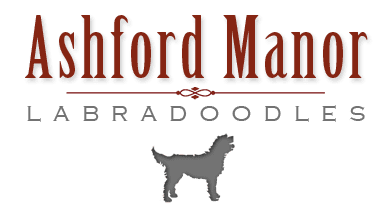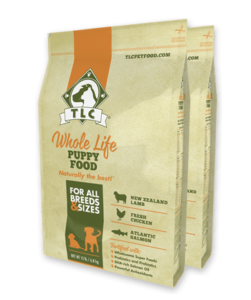This is a release from TLC Pet food, which is the food of choice here at Ashford Manor Labradoodles. We think this is one of the best dog foods on the market! Here’s how!
- keeping its consumers informed
- keeping the freshest quality ingredients
- never having a food recall
- keeping prices low
- and shipping products from their warehouse directly to your door without the middleman
Many pet food companies have had recalls over the last couple of years, it is much more of a concern today than it was 10 years ago! Your Australian Labradoodles health is important to us here at Ashford Manor Labradoodles. We take great pride in the products we use and share with our pet families; after all, our puppy families are part of our family!
Q & A From TLC Pet Food to help you understand to go grain free and why!
A recent press release from the FDA has indicated concerns that “…dogs that ate certain pet foods containing peas, lentils, other legumes or potatoes as their main ingredients…” [most often labeled ‘grain-free’] are at higher risk of developing canine heart disease, known as dilated cardiomyopathy (DCM). This announcement has rattled the pet food industry and led to many concerned pet parents, wondering about the nutritional value of the food they’ve chosen for their dogs.
We wanted to break down the FDA’s concerns and help answer any questions you may have. We’ve taken some of the questions we’ve received from customers and laid them out along with our responses to give you the answers you need to make the right choices for your pet.
What does the FDA press release mean?
The FDA is investigating potential links between an unusual surge in DCM found in dogs whose primary diet consisted of pet food made with legumes and/or potatoes listed as primary ingredients, which is the case in many “grain-free” formulas. Grain-free formulas often replace grains with vegetable-based protein sources, like peas, lentils, and other legumes. This leads to having to reduce the amount of higher quality meat-based protein sources, or an unnaturally high protein level (30% or higher), which can have its own health implications.
Meat, like chicken, lamb, and salmon are considered higher quality protein sources for pups and dogs compared to vegetable-based protein sources. This is because meat-based proteins are easily
digested and turned into important amino acids, including taurine, an amino acid only available in meat-based protein sources and important in supporting canine heart health. Reducing the amount of quality meat-based protein sources in a formula can mean that pups aren’t getting important nutrients they need to thrive. The FDA is investigating the potential link between formulas relying on vegetable-based proteins and the sudden and unusual increase in cases of canine heart disease.
Is TLC a “grain-free” pet food?
No. TLC formulas include ancient whole grains. The nutritional benefits these ingredients add to our formulas include high digestibility, a quality source of dietary fiber, magnesium, and carbohydrates.
Why is taurine not listed as an ingredient in TLC?
TLC’s primary ingredients include high-quality meat-based protein sources, like farm fresh Chicken, New Zealand Lamb and Atlantic Salmon. As mentioned above, most quality meat-based protein sources are easily digested and naturally turned into important amino acids, like taurine, by your pup’s own body. TLC includes an adequate amount of meat-based protein and there is no need to artificially add taurine to our food.
Aren’t legumes, peas and lentils “bad” ingredients?
A misconception since the FDA’s announcement has been that legumes are unhealthy ingredients. This is untrue. It’s not the ingredients themselves but the lack of quality meat-based protein sources believed to be causing the unusual surge in DCM cases. TLC includes legumes, not as a primary protein source but sources of dietary fiber, vitamins and minerals.
How can I tell which ingredients are being used as “primary ingredients” in pet food?
Thanks to the FDA and AAFCO, pet food labeling is heavily regulated. All pet food labels must clearly list ingredients in order by weight, meaning that ingredients listed first, have higher inclusion rates. Although reading the label will give you a pretty good sense of what ingredients are being relied upon for primary sources of nutrition, pet parents should be aware of “ingredient splitting”. A formula relying on legumes for protein may attempt to push wanted meat-protein sources up the list by splitting legumes, like peas, into multiple named ingredients. For example, instead of listing “peas” as a single ingredient, a label may say, “pea fiber”, “green peas”, “yellow peas”, “pea hulls”, and “pea fibre”. This practice can be misleading and should be looked for when considering different pet food.


Recent Comments